
The Underground Railroad was a network of secret routes and safe houses established in the United States during the early to mid-19th century. It was used by enslaved African Americans primarily to escape into free states and from there to Canada. The network, primarily the work of free African Americans, was assisted by abolitionists and others sympathetic to the cause of the escapees. The slaves who risked capture and those who aided them are also collectively referred to as the passengers and conductors of the Railroad, respectively. Various other routes led to Mexico, where slavery had been abolished, and to islands in the Caribbean that were not part of the slave trade. An earlier escape route running south toward Florida, then a Spanish possession, existed from the late 17th century until approximately 1790. However, the network generally known as the Underground Railroad began in the late 18th century. It ran north and grew steadily until the Emancipation Proclamation was signed by President Abraham Lincoln. One estimate suggests that, by 1850, approximately 100,000 slaves had escaped to freedom via the network.

Harriet Tubman was an American abolitionist and social activist. After escaping slavery, Tubman made some 13 missions to rescue approximately 70 enslaved people, including her family and friends, using the network of antislavery activists and safe houses known collectively as the Underground Railroad. During the American Civil War, she served as an armed scout and spy for the Union Army. In her later years, Tubman was an activist in the movement for women's suffrage.
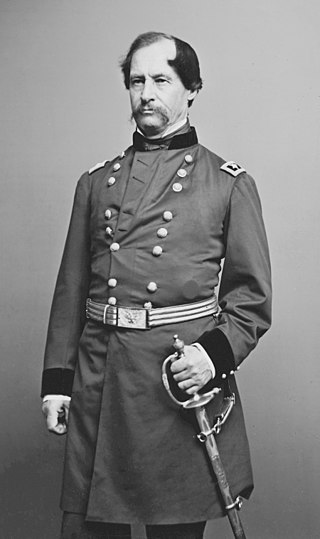
David Hunter was an American military officer. He served as a Union general during the American Civil War. He achieved notability for his unauthorized 1862 order emancipating slaves in three Southern states, for his leadership of United States troops during the Valley Campaigns of 1864, and as the president of the military commission trying the conspirators involved with the assassination of U.S. President Abraham Lincoln.

William Still was an African-American abolitionist based in Philadelphia, Pennsylvania. He was a conductor of the Underground Railroad and was responsible for aiding and assisting at least 649 slaves to freedom towards North. Still was also a businessman, writer, historian and civil rights activist. Before the American Civil War, Still was chairman of the Vigilance Committee of the Pennsylvania Anti-Slavery Society, named the Vigilant Association of Philadelphia. He directly aided fugitive slaves and also kept records of the people served in order to help families reunite.
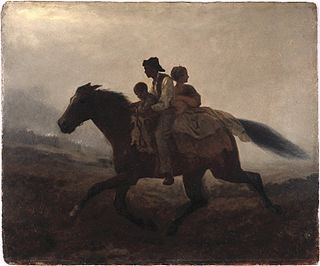
In the United States, fugitive slaves or runaway slaves were terms used in the 18th and 19th centuries to describe people who fled slavery. The term also refers to the federal Fugitive Slave Acts of 1793 and 1850. Such people are also called freedom seekers to avoid implying that the enslaved person had committed a crime and that the slaveholder was the injured party.

The fugitive slave laws were laws passed by the United States Congress in 1793 and 1850 to provide for the return of enslaved people who escaped from one state into another state or territory. The idea of the fugitive slave law was derived from the Fugitive Slave Clause which is in the United States Constitution. It was thought that forcing states to deliver fugitive slaves back to enslavement violated states' rights due to state sovereignty and was believed that seizing state property should not be left up to the states. The Fugitive Slave Clause states that fugitive slaves "shall be delivered up on Claim of the Party to whom such Service or Labour may be due", which abridged state rights because forcing people back into slavery was a form of retrieving private property. The Compromise of 1850 entailed a series of laws that allowed slavery in the new territories and forced officials in free states to give a hearing to slave-owners without a jury.

The history of slavery in Kentucky dates from the earliest permanent European settlements in the state, until the end of the Civil War. In 1830, enslaved African Americans represented 24 percent of Kentucky's population, a share that had declined to 19.5 percent by 1860, on the eve of the Civil War. Most enslaved people were concentrated in the cities of Louisville and Lexington and in the hemp- and tobacco-producing Bluegrass Region and Jackson Purchase. Other enslaved people lived in the Ohio River counties, where they were most often used in skilled trades or as house servants. Relatively few people were held in slavery in the mountainous regions of eastern and southeastern Kentucky; they served primarily as artisans and service workers in towns.

The 92nd Regiment Illinois Infantry, also known as 92nd Illinois Mounted Infantry Regiment, was an infantry and mounted infantry regiment that served in the Union Army during the American Civil War.
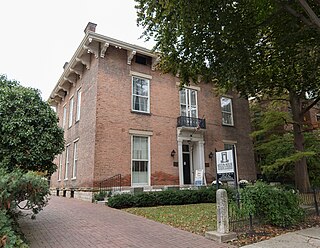
The Kelton House Museum and Garden is a Greek Revival and Italianate mansion in the Discovery District of Downtown Columbus, Ohio. The museum was established by the Junior League of Columbus to promote an understanding of daily life, customs, and decorative arts in 19th-century Columbus and to educate visitors about the Underground Railroad.
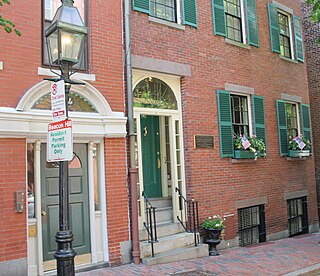
Lewis and Harriet Hayden House was the home of African-American abolitionists who had escaped from slavery in Kentucky; it is located in Beacon Hill, Boston. They maintained the home as a stop on the Underground Railroad, and the Haydens were visited by Harriet Beecher Stowe as research for her book, Uncle Tom's Cabin (1852). Lewis Hayden was an important leader in the African-American community of Boston; in addition, he lectured as an abolitionist and was a member of the Boston Vigilance Committee, which resisted the Fugitive Slave Act of 1850.

John Berry Meachum was an American pastor, businessman, educator and founder of the First African Baptist Church in St. Louis, the oldest black church west of the Mississippi River. At a time when it was illegal in the city to teach people of color to read and write, Meachum operated a school in the church's basement. Meachum also circumvented a Missouri state law banning education for black people by creating the Floating Freedom School on a steamboat on the Mississippi River.

Amy Hester "Hetty" Reckless was a runaway slave who became part of the American abolitionist movement. She campaigned against slavery and was part of the Underground Railroad, operating a Philadelphia safe house. She fought against prostitution and vice, working toward improving education and skills for the black community. Through efforts including operating a women's shelter, supporting Sunday Schools and attending conferences, she became a leader in the abolitionist community. After her former enslaver's death, she returned to New Jersey and continued working to assist escaping slaves throughout the Civil War.
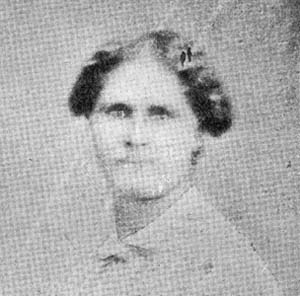
Caroline Quarlls (1826–1892) was the first enslaved person to travel through Wisconsin using the Underground Railroad. She reached Canada and freedom in 1842. Multiple abolitionists helped Caroline on her journey to Canada even as pursuers followed continuously. She married a freedman in Canada, becoming Caroline Quarlls Watkins.

Anna Maria Weems, also Ann Maria Weems, whose aliases included "Ellen Capron" and "Joe Wright," was an American woman known for escaping slavery by disguising herself as a male carriage driver and escaping to British North America, where her family was settled with other slave fugitives.

Peter Farley Fossett was an enslaved laborer at Monticello, Thomas Jefferson's plantation, who after he attained his freedom in the mid-19th century, settled in Cincinnati where he established himself as a minister and caterer. He was a captain in the Black Brigade of Cincinnati during the Civil War. Fossett was an activist for education and prison reform. He was a conductor on the Underground Railroad. His remembrances, Once the slave of Thomas Jefferson, were published in 1898.
The Dover Eight refers to a group of eight black people who escaped their slaveholders of the Bucktown, Maryland area around March 8, 1857. They were helped along the way by a number of people from the Underground Railroad, except for Thomas Otwell, who turned them in once they had made it north to Dover, Delaware. There, they were lured to the Dover jail with the intention of getting the $3,000 reward for the eight men. The Dover Eight escaped the jail and made it to Canada.
Isaac S. Flint was an Underground Railroad station master, lecturer, farmer, and a teacher. He saved Samuel D. Burris, a conductor on the Underground Railroad, from being sold into slavery after having been caught helping runaway enslaved people.

Ann Maria Jackson was an enslaved woman with nine children who ran away from her enslaver in November 1858 after two of her eldest children had been sold. Her husband became mentally ill and died in a poor house. After finding out that four more of her children were about to be sold, she gathered the seven children who were with her and traveled along the Underground Railroad for Canada. She went through the way of Wilmington, then to Philadelphia, later to St.Catherines, and then to Toronto. This was rare as she had brought her seven children with her through the Underground Railroad. It was difficult for women to run away secretly. The Jacksons established new lives for themselves in Toronto. Her two eldest children later reunited with the family, and the youngest, Albert Jackson, became the first African American to work as a letter carrier in Toronto.
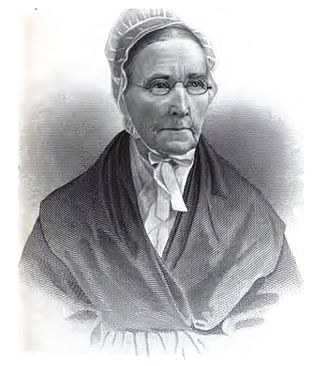
Catherine White Coffin, also known as "Auntie Katie", was an American Quaker abolitionist and the wife of Levi Coffin, the unofficial "President of the Underground Railroad". The Coffin home in Fountain City, Wayne County, Indiana, has since been turned into a museum, and was referred to as the Underground Railroad's "Grand Central Station". Catherine and Levi had six children, three of whom did not survive to adulthood. Levi Coffin said "There never was a night too cold, or dark or rainy, for her to get up at any hour, and prepare a meal for the poor fugitives [...] many a time 12, 15, and even 17 sat down," about his wife on their fifteenth wedding anniversary.

















